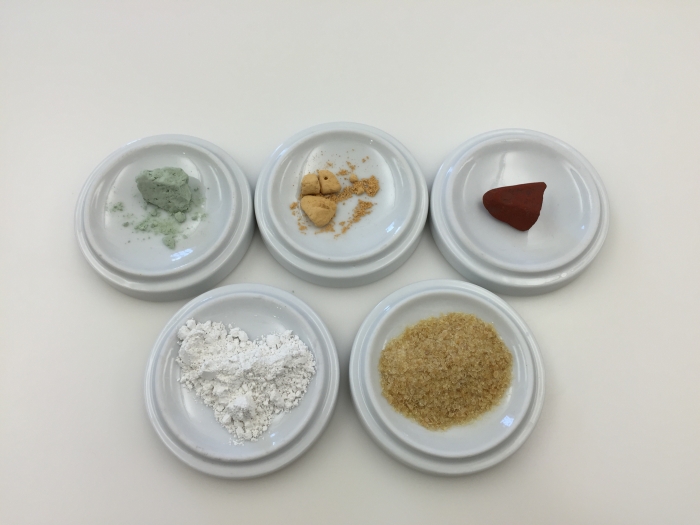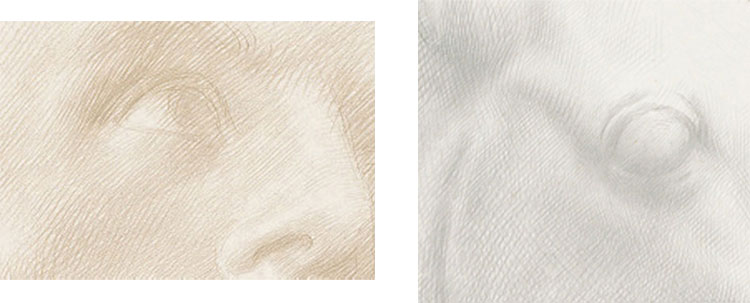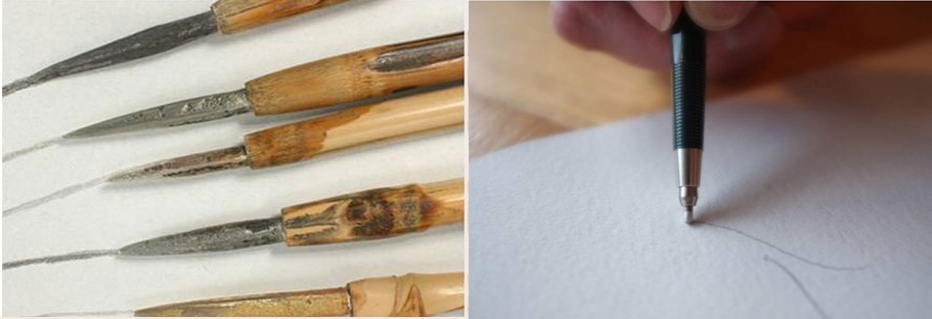Whereas soft metals such as lead leave marks on unprepared paper, silver or gold requires paper coated with a slightly abrasive ground, typically a water-based paint. Recipes from the Renaissance included bone ash, made from heated and pow- dered animal bones, combined with animal glue. Italian artists frequently tinted their grounds with mineral pigments, such as raw sienna, or organic dyes, such as indigo. Today, artists apply grounds of modern paints and pigments or use papers manufactured with coatings or abrasives incorporated into the sheet.
Techniques and Tools
Grounds

Top row (from left to right): Green earth, ochre, iron clay
Bottom row (from left to right): Bone ash, animal glue
Stylus
Although many metals can be used for sketching, most metalpoint drawings from the Middle Ages to the present were created with silver mixed with small percentages of copper. Simple early styluses consisted of a silver tip on a shaft of a durable, less precious metal. Today artists commonly insert wires into mechanical pencil-lead holders. Other items, such as spoons, bent wires, and metal plates, can be used to produce broad marks.
Goldpoint

Head of a Man Looking Up to the Right (detail), 1890s, 1946.4.1 Head of a Horse from the Parthenon (detail), 1898, 1943.3.5487
Like all metalpoint lines, those drawn with gold appear gray when first made because the meal loses its color when broken down into tiny particles. While some metals eventually oxidize or tarnish to produce different colors, goldpoint lines remain pale gray because gold does not tarnish.
Goldpoint use before the nineteenth century was extremely rare. Recent scientific analysis has revealed its presence in two fifteenth-century drawings associated with the Netherlandish master Jan van Eyck, but it has not yet been found in other Renaissance drawings. Late in the nineteenth century, the French artist Alphonse Legros and his followers, adopted goldpoint for aesthetic reasons and it has been used ever since, though not as commonly as silverpoint. Details of two drawings by Legros reveal the color differnece between silverpoint (left) and goldpoint (right).
